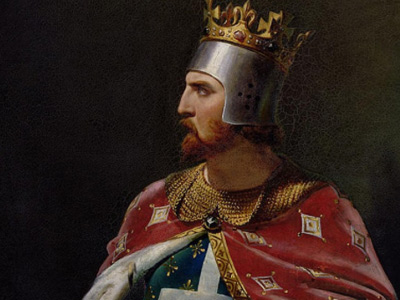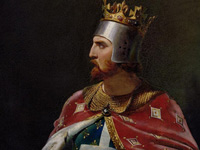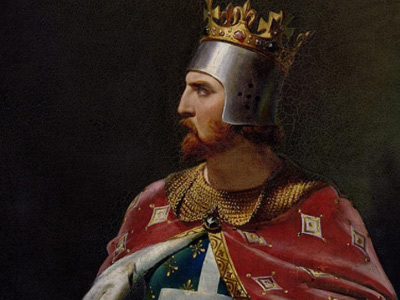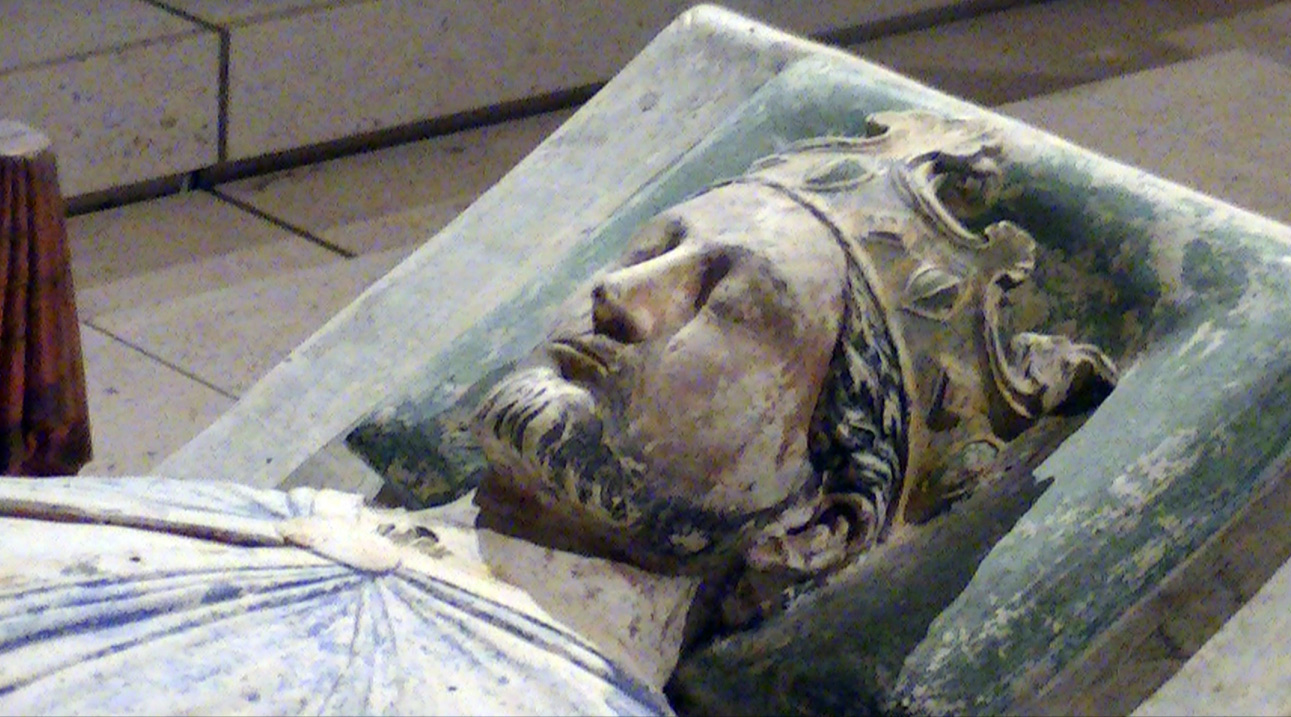Richard I of England (1157-1199)

Coronation and anti-Jewish violence
Richard I was officially invested as Duke of Normandy on 20 July 1189 and crowned king in Westminster Abbey on 3 September 1189. Richard barred all Jews and women from the investiture, but some Jewish leaders arrived to present gifts for the new king. According to Ralph of Diceto, Richard's courtiers stripped and flogged the Jews, then flung them out of court.
When a rumour spread that Richard had ordered all Jews to be killed, the people of London attacked the Jewish population. Many Jewish homes were burned down, and several Jews were forcibly baptised. Some sought sanctuary in the Tower of London, and others managed to escape. Among those killed was Jacob of Orléans, a respected Jewish scholar. Roger of Howden, in his Gesta Regis Ricardi, claimed that the jealous and bigoted citizens started the rioting, and that Richard punished the perpetrators, allowing a forcibly converted Jew to return to his native religion. Baldwin of Forde, Archbishop of Canterbury, reacted by remarking, "If the King is not God's man, he had better be the devil's".
Realising that the assaults could destabilise his realm on the eve of his departure on crusade, Richard ordered the execution of those responsible for the most egregious murders and persecutions, including rioters who had accidentally burned down Christian homes. He distributed a royal writ demanding that the Jews be left alone. The edict was loosely enforced, however, and the following March further violence occurred, including a massacre at York.
HISTORY

RESOURCES
This article uses material from the Wikipedia article "Richard I of England (1157-1199)", which is released under the Creative Commons Attribution-Share-Alike License 3.0.
© Stories Preschool. All Rights Reserved.










